7 MacOS Tips That Will Make You More Productive
Become more productive with these need to know tips and tricks for your Mac
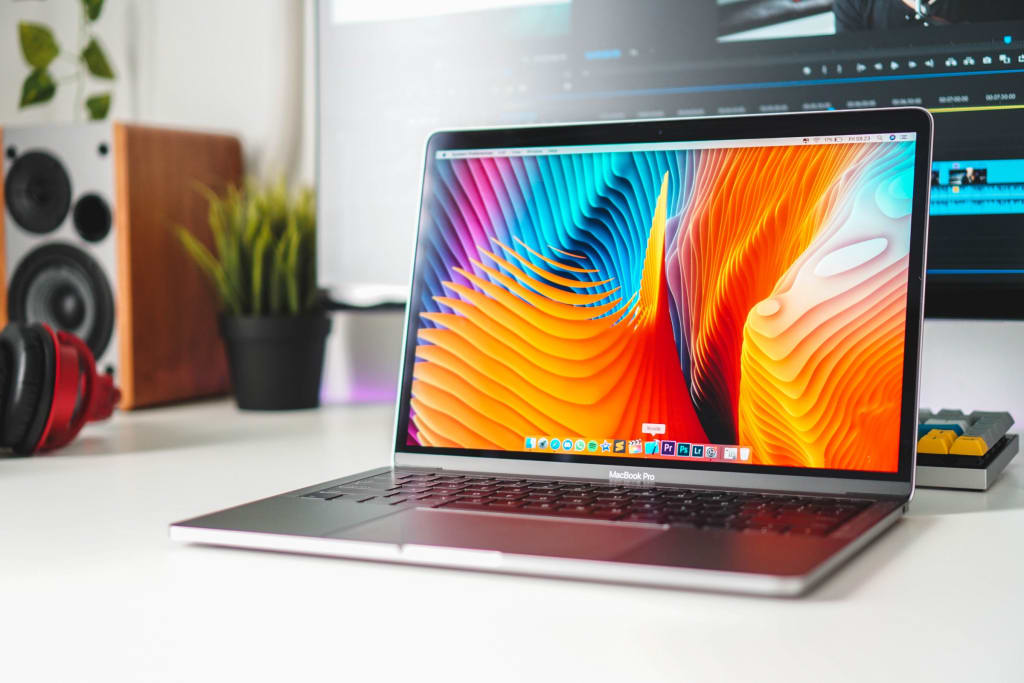
I've been using MacOS as a professional software engineer for about 12 years. After all those years of intensive Mac use, I have some tricks up my sleeve that I want to share! These are all free, as in beer, and are easy to use and set up.
1. Use ⌘+space to search with Spotlight
Lots of time on your Mac is lost on finding stuff. When starting apps, you first have to locate the icon either in the Dock or in the list of applications. Finding that email your boss has sent you last week can take a while too. Looking for that document you want to continue working on? Or perhaps that dentist's appointment in your calendar?
This is my number one tip, and not without reason. If you only remember one thing out of this article, let it be this one.
All this searching can be sped up considerably by using Spotlight. So how do you invoke Spotlight? Just press ⌘+spacebar and start typing.
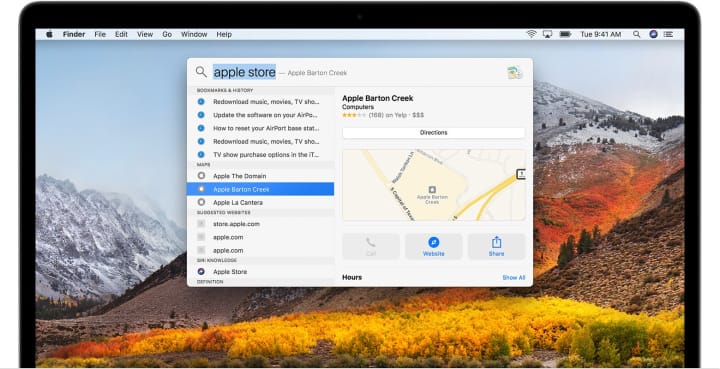
Perhaps this was no news to you, but are you aware of all the cool stuff you can do with Spotlight?
- Start applications - this is what I use the most.
- Find emails in your mail archive.
- Find activities and reminders from your calendar.
- Find documents of all types
- Find definitions
- Open bookmarks or pages from your browser history.
- Convert currencies and measurements, e.g.: $34 in gbp
- Perform calculations, e.g.: (4 * 3) / 5.4
- Ask for the weather, e.g.: weather in Cupertino, CA
This is a non-exhaustive list. To see all the options and disable some if you like, you can go to the System settings > Spotlight.
2. Hide the Dock
The Dock has become an iconic thing. You instantly recognize a Mac screen because of it. But the Dock, especially in its default settings, takes up a lot of space. I'll let you in on a little pro secret here:
I've been using Macs for 12 years, and the Dock has always been set to auto hide mode. I haven't missed it a single day of my life.
There are three reasons why you don't need the Dock to be there, right in your face, all day:
- To launch apps, you're much better off using Spotlight (see tip #1)
- The Dock takes up a lot of screen estate, just sitting there, doing nothing
- You can set the Dock to appear when you move your mouse to it. For the occasional times I need the Dock, I just move my mouse to the left of my screen et voila, it appears.
This is what my Dock settings look like:
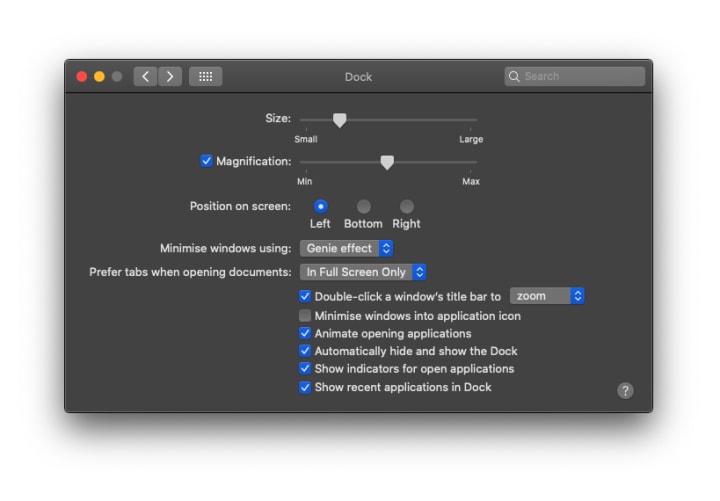
Note the option 'Automatically hide and show the Dock'.
If you have a Macbook Pro with touch bar, there's an interesting option to keep that Dock in sight without taking up space on your screen. With the free and open-source app 'Pock', you can show your Dock icons on the touch bar. It has some nice and unexpected features, like browsing your file system and opening files without ever leaving the touch bar using the Finder icon.

3. Use multiple desktops
Did you know your Mac has multiple desktops? If you hit ctrl + up, Mission Control opens, giving you an overview of your current apps. At the top of the screen, you can add extra desktops with the large + button. Here's a screenshot of my desktops:
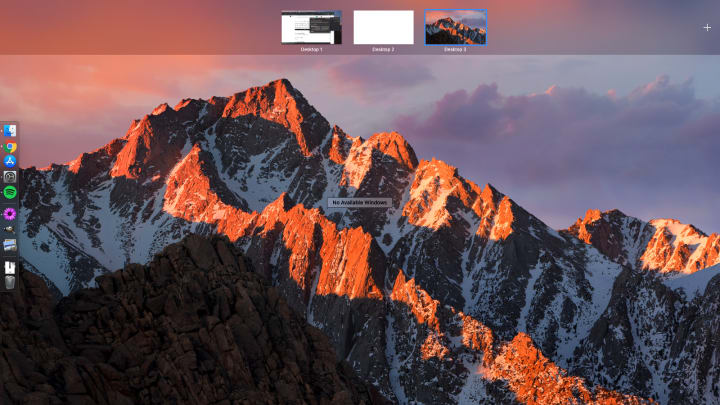
I usually have a desktop for each task when I'm multitasking. E.g. number one for writing an article, while I use number three for fun and entertainment like Spotify or browsing YouTube. Number two is my 'Screenshot' desktop, with a clean white background.
You can quickly switch between Desktops using ctrl + right arrow and ctrl + left arrow.
4. Use hot corners
In the Mission Control settings page, you can activate hot corners. If you move your mouse pointer to one of the hot corners, a certain action can be triggered. You can pick the actions yourself. I use two, as can be seen in the screenshot below:
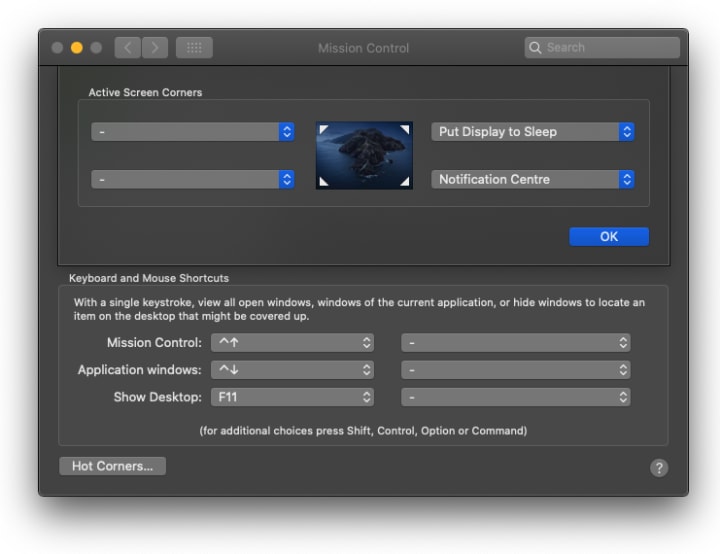
5. Use dictation
Dictation is an underused feature. You can actually talk to your Mac, telling it exactly what to do. It allows you to sit back and give those arms and hands the rest they deserve. Obviously not suited for a busy office environment, but ideal for those lazy evenings at home.
You can find the new voice control option if you open the Apple menu, choose System Preferences and then go to Accessibility. Here you can enable voice control. You can also see the list of commands it already knows, and you can even add commands yourself. You can limit your commands to work only in a specific app and you can choose from a busload of actions to be performed, including 'take a selfie', just to name one.
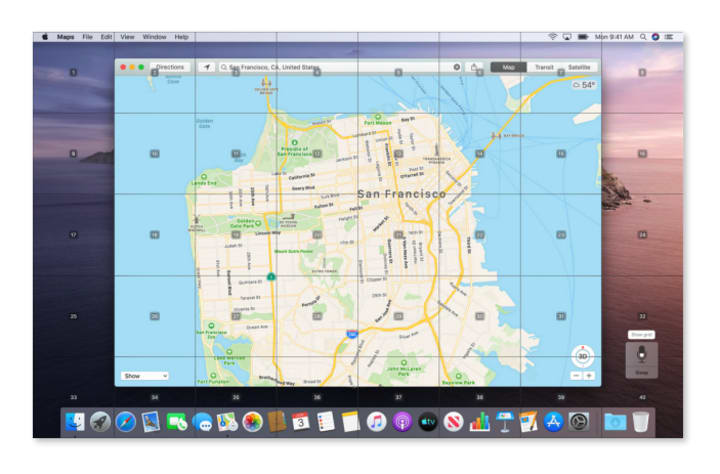
Some of my favorite commands have to do with sitting back and reading lazily. E.g.: 'scroll down', 'scroll up', 'go to beginning', 'go to end', et cetera. Make sure you also try 'show commands' to get the list of available commands.
You can also navigate apps by calling out the numbered labels next to clickable items, or even by superimposing a grid on the app that lets you zoom, drag and select with your voice.
For more details, read Apple's whitepaper.
6. Stack icons on your desktop
What does your desktop look like? Is it neatly organized? Or is it a big mess, like mine? Don't be ashamed, you're not alone. Apple introduced a function for the likes of us to clean up your desktop automatically, called Stacks. Stacks organizes your desktop, so it's easy to keep it tidy and find exactly what you're looking for.
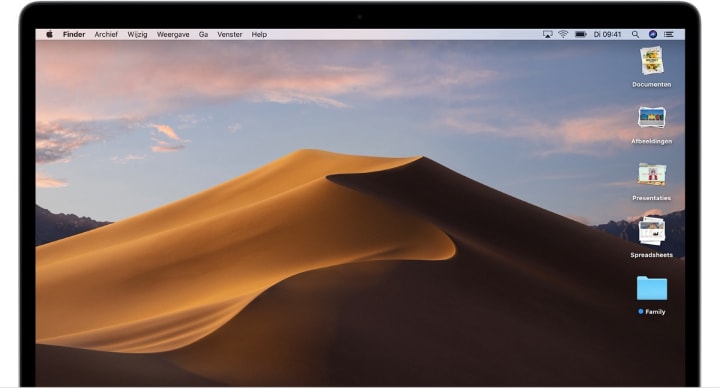
Right-click on your desktop and choose Use Stacks from the shortcut menu. Similar files will be grouped and folders will be put below them.
7. Use shortcuts
We already covered the ⌘+space shortcut in #1. There are many more keyboard shortcuts that will speed up your daily work. Here is a small list of my most favourite commands:
⌘ + ⇥: Switch between running programs. Keep the ⌘-key pressed and hit tab repeatedly to select any program
⌘ + w: Close current tab
⌘ + q: Completely quit the current program
⌘ + ~: Switch to another window belonging to the same program
⌘ + c: Copy text, images, etc.
⌘ + x: Cut (and copy) text, images, etc.
⌘ + p: Paste what you just copied or cut
Visit this Apple page to get a complete list. You can even change the shortcuts yourself in the keyboard settings page:

About the Creator
Erik-Jan van Baaren
A writer at heart and software/data engineer by profession.
Enjoyed the story? Support the Creator.
Subscribe for free to receive all their stories in your feed. You could also pledge your support or give them a one-off tip, letting them know you appreciate their work.






Comments
There are no comments for this story
Be the first to respond and start the conversation.